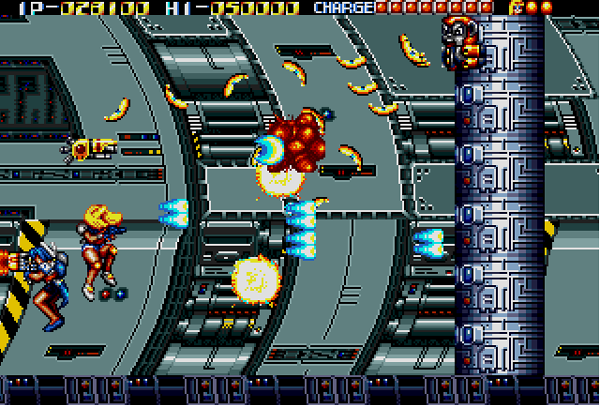
(For those of you unacquainted, the original Trouble Shooter came out for the Sega Genesis in 1991 and was known as Battle Mania for its 1992 release in Japan. The 1993 Japan-only sequel is Battle Mania Daiginjou. The heroines are called Madison and Crystal in America and Mania Ohtori and Maria Haneda, respectively, in Japan. There. Now I don’t have to explain this further down the page.)
The first reason is an amazing interview with Trouble Shooter series creator Takayan the Barbarian. Recently translated by shmuplations, it covers plenty of interesting ground. Takayan discusses the history of Vic Tokai, a game company that has long fascinated me, and the inspirations behind the Trouble Shooter titles. He also confirms something I suspected and wrote about a while ago: he’s the butler in Kid Kool.
It’s essential reading for any fan of Trouble Shooter or Vic Tokai or the game-development climate of the 1990s. Among the revelations: Trouble Shooter started off as a prototype arcade game, heroines Madison and Crystal (or Mania and Maria) originally had a weirdo weapons-dealer sidekick named Fugu, and the games are of course littered with references to everything from fantasy novels to the train stops for Sega’s Japanese headquarters.
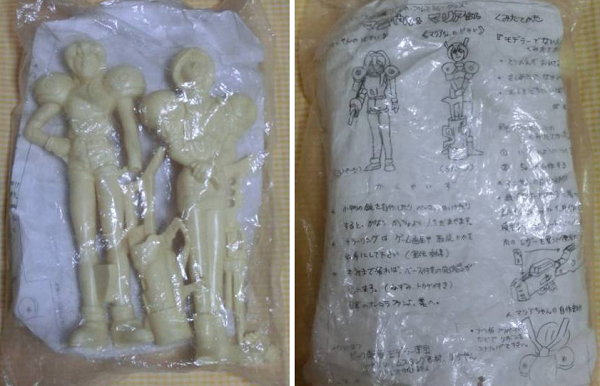
Takayan comes off as a delightful renaissance nerd creating a game he truly wanted to make and defying all marketing logic and company disapproval along the way. He even named Battle Mania Daiginjou after his favorite sake and commissioned his own highly limited run of model kits! You can buy a set on Yahoo Japan for only $300! And if that seems expensive, you don’t want to know how much the actual game goes for these days.
Takayan also mentions some minor censorship during the development of Battle Mania Daiginjou. The continue screen originally showed Crystal/Maria disrobing in a shower while the villainous Morgstein leered in the background, his sinful habits stymied by a falling bucket when the counter hit zero. Sega caught wind of this scene and demanded its removal, so the final game’s continue screen merely shows giant numbers formed from cute little Madison and Crystal portraits.
I’m glad they changed it. I know that the Trouble Shooter games trade heavily on the archetype of sexy anime heroines, I know that risque comedy is part of that tradition stretching back even past The Dirty Pair, and I know better than to dismiss something just because of a few tedious gags. Yet I like how the Trouble Shooter series never blatantly panders with hackneyed jokes about the heroines losing their clothes or falling boobs-first onto someone or chasing down villains who stole their underwear…or peeped at them in the shower.

As they were released, the Trouble Shooter games are about as suggestive as Archie comics (and perhaps even less so if you get into Dan DeCarlo’s work). That may be only because these are all-audiences video games instead of short anime films sold directly to laserdisc, but I still find their innocence refreshing. Accidentally or not, the games embody everything I like and nothing I dislike about the cheerful, destructive anime excess of a bygone era.
And that’s not the only important Trouble Shooter news! A thoughtful user of this site regularly post scans of BEEP! Mega Drive, a Japanese publication that covered all things Sega from 1989 to 1994. It’s a fascinating look at just how different the landscape was for Sega’s 16-bit system. In America, we knew it as the Sega Genesis and saw it in a neck-and-neck race with Nintendo and the Super NES. In Japan, it was called the Mega Drive and lagged far behind Nintendo’s machine and even NEC and Hudson’s PC Engine.
Not that Beep! Mega Drive is sparse in coverage. It’s full of previews, ads, and even some Alisia Dragoon and El Viento comics. And there’s something about Trouble Shooter, of course. Several somethings, in fact.
The best is a preview of Battle Mania Daiginjou. It’s very early, as the game’s simply called Battle Mania 2 and all we see are production sketches.
Those sketches are wonderful, however. I love the shot of Madison facing off against the goofy basketball robot boss, with her dressed as a Sailor Moon character in the corner. I like the scrawled image of Madison and Crystal confronting some weird mechanical spider, as though it’s a rough storyboard for a boss battle that never was. I especially like that the large portrait of Madison is drawn better than the game’s actual cover art, which, let’s face it, is a little crude.
These BEEP! issues also detail something Takayan discusses in the interview: the actual TV commercial for the original Trouble Shooter. The article describes a 15-second spot that shows an animated Madison and Crystal facing enemies. Sadly, Takayan believes that the ad survives nowhere, though he mentions that it aired during programs for the soccer team S-Pulse. And I bet there’s at least one Japanese soccer fan nutty enough to have vintage recordings of every S-Pulse airing with the commercials. We just have to locate that fan.
Takayan also mentions a commercial for Battle Mania Daiginjou, for which he still has the original audio of Ginga Banjou’s narration. If nothing else, I’m impressed that Vic Tokai used conventional video-game ads for Trouble Shooter instead of following the deeper trends of Japanese TV commercials and going with, say, a yodeling Claymation hamster swimming in a vat of pinto beans.
BEEP! Mega Drive also ran what may have been the first announcement of Battle Mania Daiginjou in early 1993. It shows no screenshots, only unpardonable filth.
If nothing else, it proves again how narrowly Trouble Shooter avoided dopey sex-comedy cliches. I also like the little comic, possibly drawn by Takayan himself. Madison looks like a Moomin in that last panel.
There’s a second spot in the July issue, and it’s all about violence. Crystal and Madison needlessly duke it out next to a comic that introduces a delightful and heavily armed soldier named, if my katakana serves me, Programmer Johnson. He extols the merits of the KILL SHIT school of game design, but Madison subdues him with a plant.
Don’t despair, Programmer Johnson. The modern world is full of games just for you.
These BEEP! discoveries are even more fascinating for their obscurity. I don’t believe either Trouble Shooter game inspired an official art book back in their day. This means that these old issues of BEEP! could be the only places to find such records of this remarkable series. And I can’t think of a better argument for preserving game magazines.
Lastly, you can watch those delightful Retro Pals play Battle Mania Daiginjou as they explore fan-translated Mega Drive games on their Twitch channel. I was not able to join in the sidebar chat, but the hosts still mentioned me as someone who can’t shut up about Battle Mania and/or Trouble Shooter.
So that’s three major breakthroughs in Trouble Shooter news this year so far. Will further BEEP! excavations reveal more secrets about Battle Mania Daiginjou? Will someone at The Cutting Room Floor discover the risque continue screen hidden in the game’s code? Will a daring game company buy up Vic Tokai’s catalog and put both Trouble Shooter games on Switch, Steam, and PlayStation 4? Look, if Johnny Turbo can make a comeback, I refuse to give up on anything.

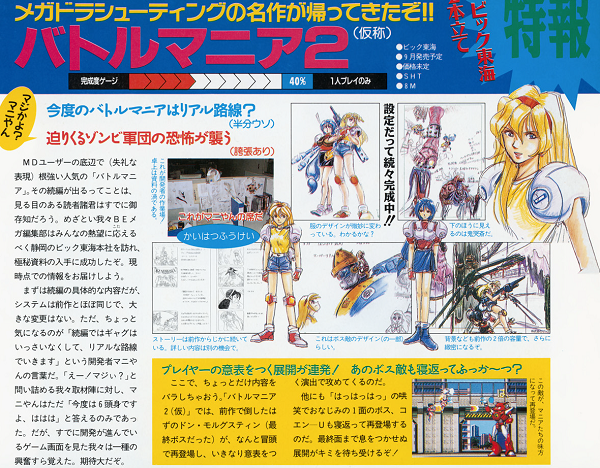

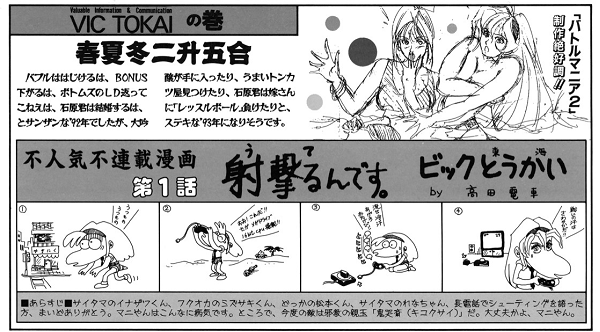
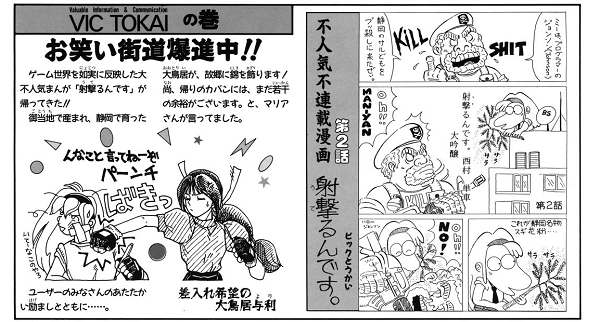
No comments:
Post a Comment